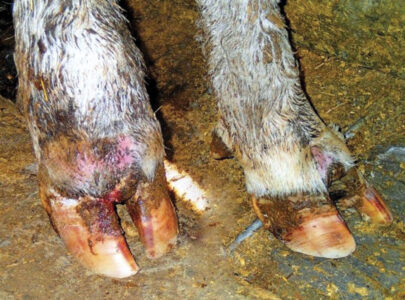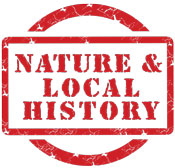PLANTS AND ANIMALS KNOW BETTER THAN WE DO
Years ago, I was hiking in the Hacienda Barú rainforest with my friend, Juan Ramón. Though uneducated he had a vast knowledge of the environment, which had partly been passed on to him by his father and grandfather, and the rest he had learned through personal experience. “Juan”, I commented, “I was thinking that earlier we passed through an area where there were lots of gallinazo trees, then there eight scattered ojoches, over there are half a dozen jabillos, and right now we are admiring three big ceibos. I wonder why they grow in the same general area like that”.
“They grow in places they like”, was his simple reply.
His way of putting it was not the least bit scientific, but his answer really made sense. Perhaps certain species thrive in soils with certain nutrients that are abundant in some locations and deficient or absent in others. Different species may need different trace elements. I’m sure that many other environmental factors were in play, but his answer still made sense to me. I thought of people having cravings and remembered a time when Diane and I both were struck with an irresistible urge to eat radishes. For a week we couldn’t get enough of them. We ate them at every meal. We ate them as snacks, whole, in salads, and even in sandwiches. After about a week, the craving simply went away. We figured that our normal diet must have been lacking some essential nutrient that was readily available in radishes.
 A couple of years after that I went to work on a cattle farm that had lots of problems that needed solving. Three were quite serious and difficult to deal with. First of all, we were constantly treating animals for a condition called hoof rot, two or three cases every day. Secondly, every calf that was born on the farm got sick with a disease called calfhood diphtheria, which is usually not fatal, but the treatment is long-lasting and leaves the calf in a weakened condition. And lastly the cows were not coming into heat (estrus) regularly. Whenever one occasionally did, we inseminated her, but to my dismay, less than 10% became pregnant. They were receiving an excellent and well-balanced mixed feed and a well-known mineral mix. It just didn’t make sense. One day a salesman stopped by selling a novel type of mineral for cattle. Instead of giving the cattle a mixture, each element was offered separately, and the cattle chose what they wanted. The macro minerals were ground up like salt and offered in wooden boxes, and the trace minerals were in blocks about the size and shape of a hockey puck. I decided to give it a try. From the first day, the cattle consumed only three minerals, iodine, copper, and phosphorous. Within 24 hours, the blocks of iodine and copper were gone. I called the salesman and ordered more. He brought two more blocks of each. In three days, those were gone. “Unbelievable”, exclaimed the salesman. “Your cattle are consuming near toxic levels of iodine and copper. They must be suffering a severe deficiency”.
A couple of years after that I went to work on a cattle farm that had lots of problems that needed solving. Three were quite serious and difficult to deal with. First of all, we were constantly treating animals for a condition called hoof rot, two or three cases every day. Secondly, every calf that was born on the farm got sick with a disease called calfhood diphtheria, which is usually not fatal, but the treatment is long-lasting and leaves the calf in a weakened condition. And lastly the cows were not coming into heat (estrus) regularly. Whenever one occasionally did, we inseminated her, but to my dismay, less than 10% became pregnant. They were receiving an excellent and well-balanced mixed feed and a well-known mineral mix. It just didn’t make sense. One day a salesman stopped by selling a novel type of mineral for cattle. Instead of giving the cattle a mixture, each element was offered separately, and the cattle chose what they wanted. The macro minerals were ground up like salt and offered in wooden boxes, and the trace minerals were in blocks about the size and shape of a hockey puck. I decided to give it a try. From the first day, the cattle consumed only three minerals, iodine, copper, and phosphorous. Within 24 hours, the blocks of iodine and copper were gone. I called the salesman and ordered more. He brought two more blocks of each. In three days, those were gone. “Unbelievable”, exclaimed the salesman. “Your cattle are consuming near toxic levels of iodine and copper. They must be suffering a severe deficiency”.
For a month the cattle never touched another mineral, only iodine, copper, and phosphorus, then suddenly, and for no apparent reason, they stopped and began licking a variety of macro and trace minerals. From that day forward, we never treated another case of hoof rot or calfhood diphtheria, and in one week 29 cows and heifers came into heat. We inseminated all of them and 28 became pregnant. Never in my life had I seen such a high rate of pregnancy. My three biggest problems had been solved.
My dad owned and managed an animal feed manufacturing plant. I told him the story thinking he would be excited about the idea. But his reaction astounded me. “I would never use that system with my cattle” he said. “I don’t believe a cow is smart enough to know what minerals she needs”. I could have retorted that maybe she didn’t know what she needed, but her body did, but I decided to hold my tongue. No matter what I said it wouldn’t have convinced my dad. He just didn’t get it.
Different plants have different ways of dispersing their seeds. The ceibo and gallinazo produce seeds that are carried on the breeze to all parts of the rainforest. Once it is mature and dry, the jabillo pod explodes with a bang like a big firecracker. The seeds spin outwards and fly in every direction. Bats carry the ojoche seeds far from the tree, eat the fleshy outer covering, and drop the seed on the ground. Not all the seeds germinate and grow into healthy adult trees, only those that land somewhere that they like do so.
Last year we planted two identical bushes in our yard about 30 meters apart. Both were healthy, about 30 cm tall and in soil-filled plastic bags, prior to planting. The holes where they were planted were the same size and filled with organic earth which we purchased at a local nursery. Today, a year later, one of the bushes is twice as big as the other. Though the soil in both locations was basically the same, some essential some other necessity, must have been missing from the location where the smaller bush was planted. In other words: “The bush didn’t like it there”. I guess that means that not only does a cow know better than the person who feeds her what nutrients she needs, but also a plant knows better than the person doing the planting where it should be planted.



